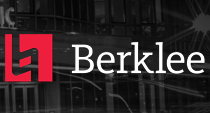
Exploring Audio-reactive Visuals as a Inspirational Tool for Musical Composition, Improvisation, and Performance
Files
Abstract
Performing artists in the 21st century are able to create more elaborate visual spectacles than ever before with the help of pre-programming or VJs, but still many music audiences continue to seek out improvisation and spontaneity above all else in the concerts they attend. This thesis asks, how can visual spectacle respond more directly to live music played on guitar, drums, keys? The author1 explores mapping musical ideas like rhythm, harmonic relationships/tonal centers, and volume through MIDI to colors, forms, and other visual parameters in Max MSP. Beyond practical uses as a visual supplement to live performance, a musician could use the program as an inspirational or educational tool to encourage new rhythmic or harmonic ideas from their playing. Or they might even disregard sonic musicality to see what kind of exciting visuals they are able to produce with the instrument as a controller. With this framework, different audio-visual metaphors could be crafted as an extension of the musical expression, or to specifically elicit different musical ideas from a group of performers across songs or sections of songs.
Publication Date
7-1-2023
Campus
Valencia (Spain) Campus
Keywords
non-linear; audio reactive; performance; audio-visual; improvisation
Recommended Citation
Walter, Jacqueline. “Exploring Audio-reactive Visuals as a Inspirational Tool for Musical Composition, Improvisation, and Performance.” Master's thesis, Berklee College of Music, 2023. .


